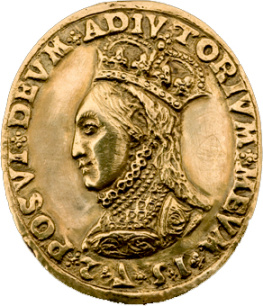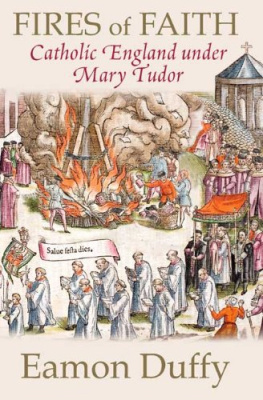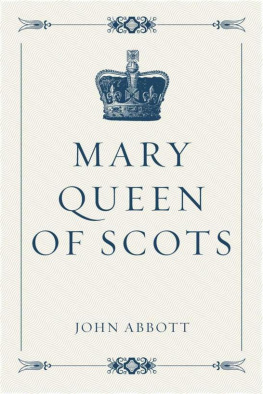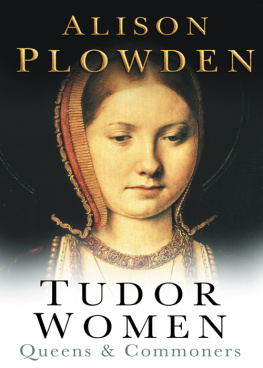Whitelock - Mary Tudor: Englands First Queen
Here you can read online Whitelock - Mary Tudor: Englands First Queen full text of the book (entire story) in english for free. Download pdf and epub, get meaning, cover and reviews about this ebook. City: London, year: 2010, publisher: Bloomsbury Publishing Plc, genre: Non-fiction. Description of the work, (preface) as well as reviews are available. Best literature library LitArk.com created for fans of good reading and offers a wide selection of genres:
Romance novel
Science fiction
Adventure
Detective
Science
History
Home and family
Prose
Art
Politics
Computer
Non-fiction
Religion
Business
Children
Humor
Choose a favorite category and find really read worthwhile books. Enjoy immersion in the world of imagination, feel the emotions of the characters or learn something new for yourself, make an fascinating discovery.

- Book:Mary Tudor: Englands First Queen
- Author:
- Publisher:Bloomsbury Publishing Plc
- Genre:
- Year:2010
- City:London
- Rating:4 / 5
- Favourites:Add to favourites
- Your mark:
- 80
- 1
- 2
- 3
- 4
- 5
Mary Tudor: Englands First Queen: summary, description and annotation
We offer to read an annotation, description, summary or preface (depends on what the author of the book "Mary Tudor: Englands First Queen" wrote himself). If you haven't found the necessary information about the book — write in the comments, we will try to find it.
Mary Tudor: Englands First Queen — read online for free the complete book (whole text) full work
Below is the text of the book, divided by pages. System saving the place of the last page read, allows you to conveniently read the book "Mary Tudor: Englands First Queen" online for free, without having to search again every time where you left off. Put a bookmark, and you can go to the page where you finished reading at any time.
Font size:
Interval:
Bookmark:
Acknowledgements
This is the book I always wanted to write. From the earliest days of my doctoral research I was driven by a desire to tell Marys remarkable story, to push her centre stage as Englands first queen and bring her out from the shadow of her younger sister, Elizabeth. I hope I have gone some way to achieving this.
In writing this book I have incurred many debts to scholars, writers, librarians and friends. The staff of Cambridge University Library have been endlessly efficient, helpful and friendly, as have those of the British Library and the National Archives. I must also thank Henry Bedingfeld for allowing me to view his family records at Oxburgh Hall. Various colleagues have provided help, inspiration and guidance during the course of my research, including my former tutor David Starkey, Judith Richards, John Guy, Susan Doran, Jeri Mcintosh, Diarmaid MacCulloch, David Loades, Nicola Stacey, Stephen Alford, Richard Rex, Mia Rodriguez-Salgado and Ian Archer. I should also like to thank the Master and Fellows of Corpus Christi for providing a supportive research environment, and my colleagues in the Department of History at Royal Holloway, University of London. Teaching often aids research and various students have, over the past few years, asked important questions and prompted interesting discussion.
My agent Catherine Clarke has provided great encouragement, guidance and support throughout. Michael Fishwick, my editor at Bloomsbury, has always remained enthusiastic about the book and has demonstrated great vision and insight. His early comments on a preliminary draft challenged me to write a far more ambitious and improved book. For assistance in the editing of the text I owe great thanks to Kate Johnson who has been immensely efficient and incisive, and to Anna Simpson and all at Bloomsbury.
This book has been long in the making and would simply not have been started or finished without the support of friends and family. Its completion is very much a shared achievement. To some I must offer specific thanks: to Kate Downes for her enthusiasm and invaluable support of me and the book; to Alice Hunt for endless Mary chats and great friendship; to Miri Rubin and Gareth Stedman-Jones and Judy Forshaw and Richard Swift who have all supplied wine, dinners and conversation. Sandra and David Swarbrick and Paul and Jenny Baker have provided constant love and support and they, together with Chez Hall, James McConnachie, Alexander Regier, Jonathan Hall, Naomi Yandell, Pedro Ramos-Pinto and all at Herbert Street, have been great friends. Max and the boys at HDV were ever ready with a Friday drink. Andrew Burns played an important role in the genesis of the book and Rebecca Stott has been a valuable library comrade and an inspiring friend. I owe particular thanks to Victoria Gregory, Rosie Peppin Vaughan, Jo Maybin and Rebecca Edwards Newman upon whom I have depended enormously. Isobel Maddison and her husband Peter have shown immense loyalty and patience, have supported me through difficult times and have been crucial to the books completion.
My thanks go to Amy and Emily Whitelock, Martin Inglis and Eric Nason for their support and encouragement. I feel much sadness and regret that my grandfather Kenneth Whitelock, who bought me so many history books when I was a child, is not alive to read mine. Finally I would like to thank my parents Paul and Celia Whitelock for their unfailing love and concern. Having taken me on endless trips to castles and stately homes as I was growing up it is doubtless they who inspired my initial desire to ponder the past.
Anna Whitelock
Cambridge, 2009
ANNA WHITELOCK gained her PhD in History from Corpus Christi College, Cambridge in 2004 with a thesis on the court of Mary 1. Her articles and book reviews on various aspects of Tudor history have appeared in publications including the Guardian , the Times Literary Supplement and BBC History . She has taught at Cambridge University and is now a lecturer in Early Modern History at Royal Holloway, University of London.
Chapter
Princess of England
Mary, daughter of King Henry VIII and Katherine of Aragon, was born at four oclock on the morning of Monday 18 February 1516 at Placentia, the royal palace at Greenwich, on the banks of the River Thames. Three days later, the nobility of England gathered at the royal apartments to form a guard of honour as the baby emerged from the Queens chamber in the arms of Katherines devoted friend and lady-in-waiting, Elizabeth Howard, Countess of Surrey. Beneath a gold canopy held aloft by four knights of the realm, the infant was carried to the nearby Church of the Observant Friars. It was the day of Marys baptism: her first rite of passage as a royal princess.
The procession of gentlemen, ladies, earls and bishops paused at the door of the church, where, in a small arras-covered wooden archway, Mary was greeted by her godparents, blessed, and named after her aunt, Henrys favourite sister. The parade then filed two-by-two into the church which had been specially adorned for the occasion. Jewel-encrusted needlework hung from the walls; a font, brought from the priory of Christchurch Canterbury and used only for royal christenings, had been set on a raised and carpeted octagonal stage, with the accoutrements for the christening basin, tapers, salt and chrism laid out on the high altar. After prayers were said and promises made, Mary was plunged three times into the font water, anointed with the holy oil, dried, and swaddled in her baptismal robe. As Te Deums were sung, she was taken up to the high altar and confirmed under the sponsorship of Margaret Pole, Countess of Salisbury. Finally, with the rites concluded, her title was proclaimed to the sound of the heralds trumpets:
God send and give good life and long unto the right high, right noble and excellent Princess Mary, Princess of England and daughter of our most dread sovereign lord the Kings Highness.
Despite the magnificent ceremony, the celebrations were muted. This was not the longed-for male heir, but a girl.
Six years earlier, in the Church of the Observant Friars, Henry had married his Spanish bride, Katherine of Aragon. Within weeks of the wedding, Katherine was pregnant and Henry wrote joyfully to his father-in-law, Ferdinand of Aragon, proclaiming the news: Your daughter, her Serene Highness the Queen, our dearest consort, has conceived in her womb a living child and is right heavy therewith. Three months later, as England awaited the birth of its heir, Katherine miscarried. Yet the news was not made public and with her belly still swollen, most likely with an infection, she was persuaded by her physician that she remained pregnant of another child. A warrant was issued for the refurbishment of the royal nursery and in March 1511 she withdrew to her apartments in advance of the birth.
For weeks the court waited for news of the delivery but labour did not come. As Katherines confessor Fray Diego reported, it has pleased our Lord to be her physician in such a way that the swelling decreased. There was no baby. Luiz Caroz, the new Spanish ambassador, angrily condemned those who had maintained that a menstruating woman was pregnant and had made her withdraw publicly for her delivery. Many councillors now feared that the Queen was incapable of conceiving. Fearing her fathers displeasure, Katherine wrote to Ferdinand in late May, four months after the event, claiming that only some days before she had miscarried a daughter, and failing to mention the subsequent false pregnancy. Do not be angry she begged him for it has been the will of God.
Hope soon revived and whilst writing letters of deceit to her father, Katherine discovered she was pregnant once more. Seven months later, on the morning of New Years Day, bells rang out the news of the safe delivery of a royal baby. It was a living child and a son; England had its male heir. Celebrations engulfed the court and country and five days later the child was christened and proclaimed Prince Henry, first son of our sovereign lord, King Henry VIII. The King rode to the Shrine of Our Lady at Walsingham in Norfolk to give thanks and hold a splendid joust in his sons honour. But the celebrations were short-lived. Three weeks later Prince Henry died. It did not augur well. Over the next seven years, failed pregnancy followed failed pregnancy, each ending in miscarriage, stillbirth or infant death.
Next pageFont size:
Interval:
Bookmark:
Similar books «Mary Tudor: Englands First Queen»
Look at similar books to Mary Tudor: Englands First Queen. We have selected literature similar in name and meaning in the hope of providing readers with more options to find new, interesting, not yet read works.
Discussion, reviews of the book Mary Tudor: Englands First Queen and just readers' own opinions. Leave your comments, write what you think about the work, its meaning or the main characters. Specify what exactly you liked and what you didn't like, and why you think so.








